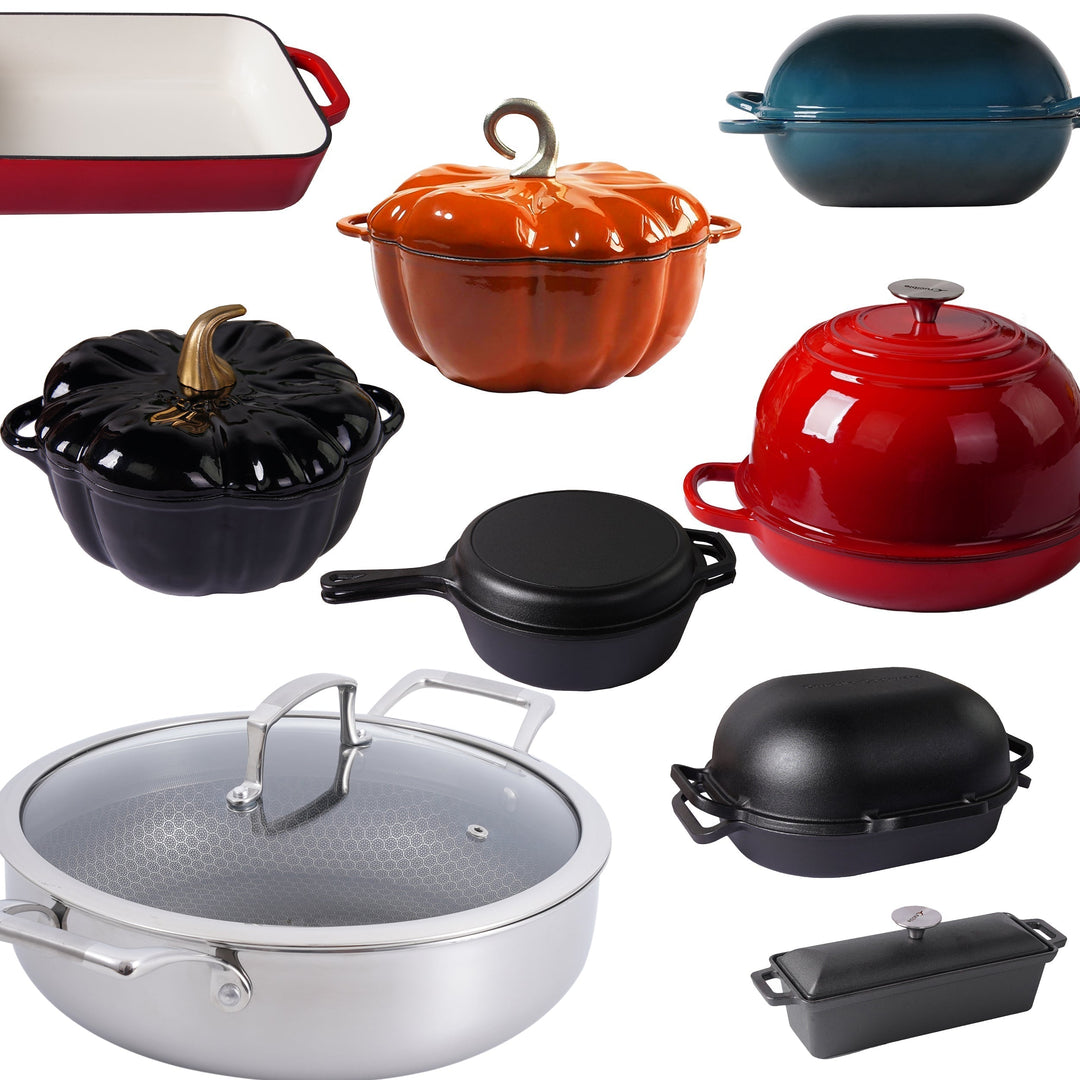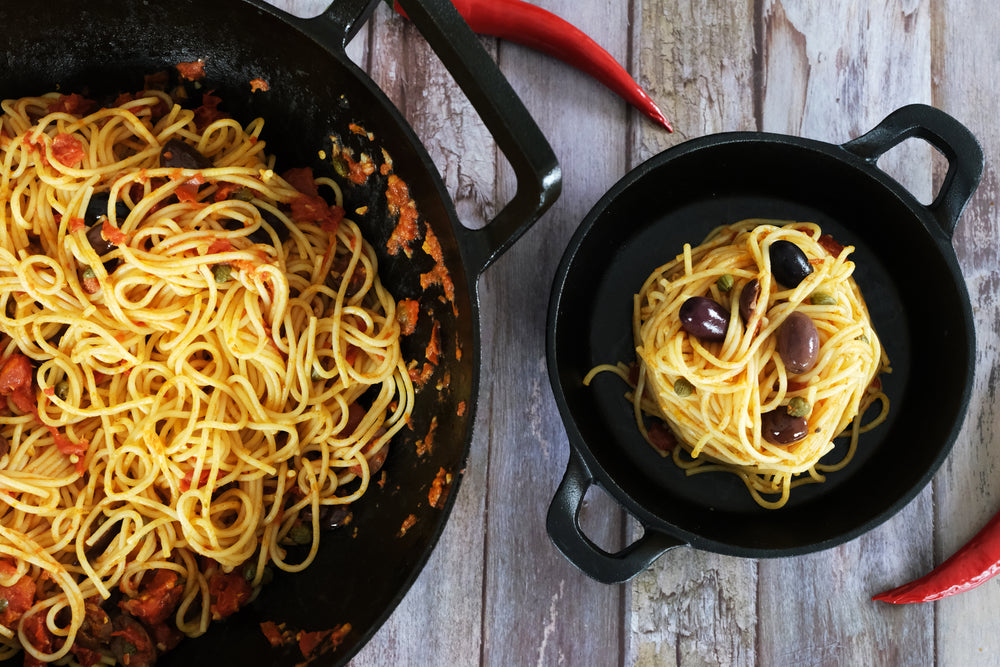زيادة ارتفاع العجين المخمر: استخدام Dutch Oven مع غطاء المقلاة للحصول على خبز بول مثالي

خبز خبز العجين المخمر المثالي هو مزيج من الفن والعلم، وتحقيق ذلك الانتفاخ الجميل في الفرن هو أحد الجوانب الرئيسية للحصول على النتيجة الصحيحة. يلجأ العديد من الخبازين إلى طباخ مزيج المقلاة للمساعدة في هذه العملية. الطريقة النموذجية تتضمن استخدام المقلاة الضحلة كأساس والمقلاة العميقة كغطاء. هذا الترتيب لا يجعل من السهل فقط نقل العجين إلى المقلاة بل يبسط أيضًا عملية شق العجين وإزالة الخبز عند الانتهاء.
ولكن ماذا لو لم يكن لديك طباخ مزيج المقلاة؟ لا مشكلة! يمكنك تحقيق نفس النتائج باستخدام Dutch oven مع غطاء مقلاة. إليك كيف يمكنك القيام بذلك:
دليل خطوة بخطوة
-
حضّر العجين الخاص بك: اتبع وصفتك المفضلة لخبز العجين المخمر لتحضير العجين. اتركه يتخمر وشكّله إلى رغيف دائري (بول).
-
سخّن Dutch oven الخاص بك: سخّن الفرن إلى درجة الحرارة المطلوبة، عادة حوالي 450°F (230°C). ضع Dutch oven مع غطاء المقلاة بداخله لتسخينه أيضًا. هذا أمر حاسم لتحقيق انتفاخ جيد في الفرن.
-
جهز Dutch oven: بعد التسخين، أزل Dutch oven بحذر من الفرن. اقلبه رأسًا على عقب بحيث يصبح الغطاء الضحل هو القاعدة والوعاء هو الغطاء. هذا الترتيب يحاكي طباخ المزيج، موفرًا نفس الفوائد ولكن مع مساحة أكبر للعجين ليرتفع.
-
انقل العجين: ضع العجين المشكّل برفق على غطاء المقلاة الضحل. القاعدة الضحلة تجعل من السهل نقل العجين وتسمح بشقّه بسهولة.
-
شق العجين: باستخدام شفرة حادة أو لام، اشق سطح العجين. هذا يساعد في التحكم في توسع الرغيف أثناء الخبز، مما يضمن ارتفاعًا وقشرة جميلة.
-
غطِ واخبز: ضع الوعاء العميق (الذي أصبح الآن الغطاء) بحذر فوق العجين. هذا يخلق بيئة محكمة تحبس البخار، وهو ضروري لتحقيق ذلك الانتفاخ المثالي في الفرن. اخبز لمدة 20 دقيقة أولى مع الغطاء.
-
أكمل الخبز: بعد 20 دقيقة، أزل الغطاء للسماح للقشرة بأن تتحمر وتصبح مقرمشة. استمر في الخبز لمدة 20-25 دقيقة أخرى أو حتى يصبح لون الخبز بنيًا ذهبيًا عميقًا ويصدر صوتًا أجوف عند النقر عليه.
-
برد واستمتع: أزل الخبز من الفرن ودعه يبرد على رف سلكي. التبريد مهم لأنه يسمح للداخل بأن يستقر بشكل صحيح.
لماذا تعمل هذه الطريقة
استخدام Dutch oven مع غطاء المقلاة مقلوبًا يوفر عدة فوائد:
- انتفاخ أفضل في الفرن: الختم المحكم يحبس البخار، وهو ضروري للارتفاع الأولي للخبز.
- سهولة التعامل: القاعدة الضحلة تجعل من السهل نقل وشق العجين.
- ارتفاع أعلى: الغطاء العميق (الذي أصبح القاعدة) يمنح العجين مساحة أكبر ليتوسع، مما يؤدي إلى ارتفاع أعلى، مثالي لرغيف بول.
- تعدد الاستخدامات: بالإضافة إلى الخبز، يمكنك استخدام Dutch oven كما هو مقصود لطهي اليخنات، والطهي البطيء، وأكثر.

الخلاصة
خبز خبز العجين المخمر في المنزل يمكن أن يكون مجزيًا للغاية، ومع الأدوات والتقنيات الصحيحة، يمكنك تحقيق نتائج بجودة المخابز. استخدام Dutch oven مع غطاء مقلاة مقلوب هو بديل رائع لطباخ مزيج المقلاة. إنه يقدم كل فوائد تحقيق انتفاخ مثالي في الفرن ورغيف مرتفع، مما يجعل خبز العجين المخمر المنزلي ليس فقط متعة للأكل ولكن أيضًا فرحة للخبز.
















اترك تعليقًا